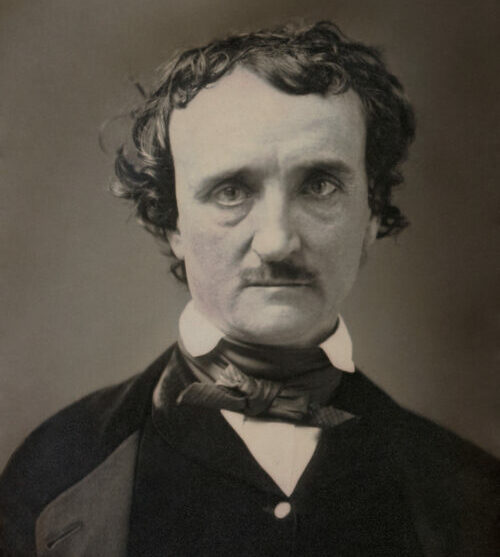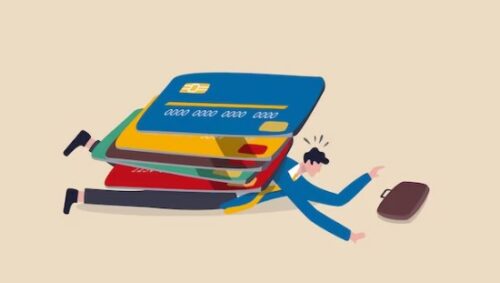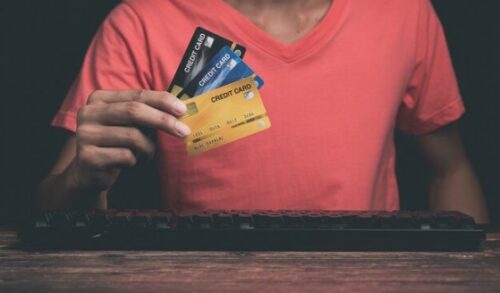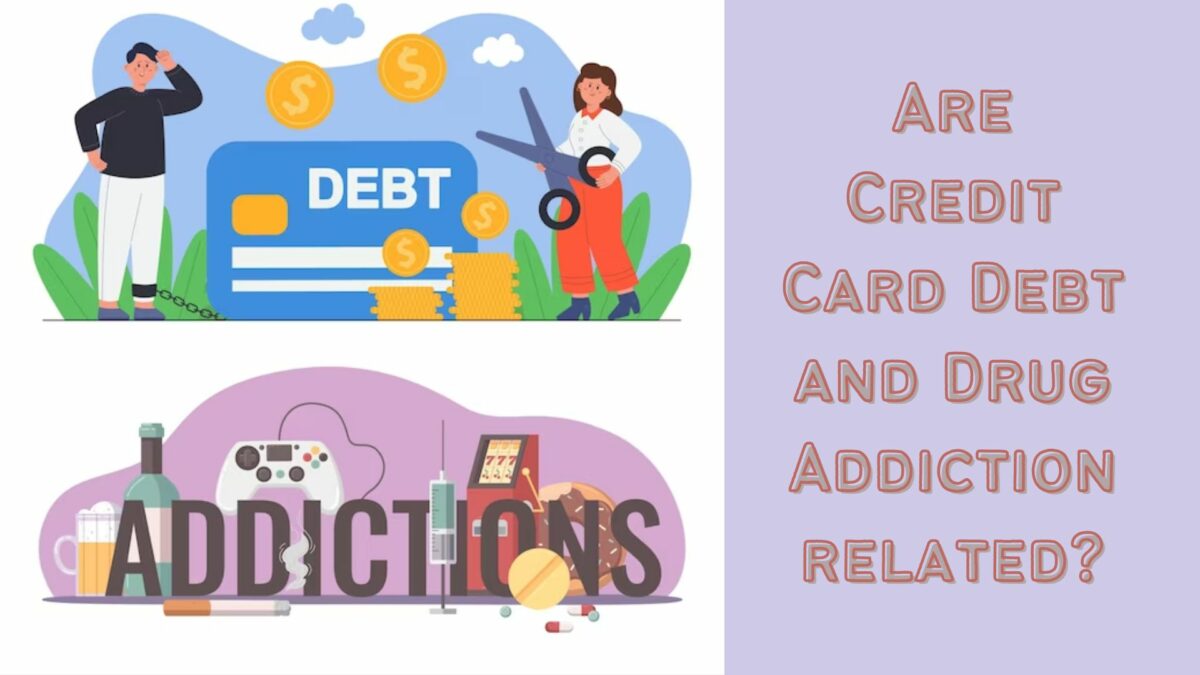“I have absolutely no pleasure in the stimulants in which I sometimes so madly indulge.”
– Edgar Allen Poe

Disclaimer: I am not a doctor. I don’t even play one on TV.
There continues to be a debate about whether or not the “snowball method” of paying down debt by paying off the smallest debt first as espoused by Dave Ramsey is practically superior to the mathematical approach of paying off the highest interest rate debt set forth by mathematics.
If nerds ruled the world, we’d only pay down the highest interest rate debt until it was at zero, and then move on to the next highest interest rate, and so forth.
However, Monkey Brain intervenes in our lives and complains that it seems so long until we can pay down that first one and sits in the back seat jumping up and down yelling “Are we there yet?” Like a parent who just wants their kid to be quiet for an hour, we promise that if he’s quiet for 30 minutes, we’ll stop off and get some ice cream.
The credit card equivalent, according to Dave Ramsey, is to pay off the smallest debt first so that you can have a win, gain momentum, and feel good about what you’re doing. It’s a psychological trick, since, after all, if you acted in the way that you knew you should, you wouldn’t have been in debt in the first place.
It all sounded good to me. Ramsey, if you believe all of the callers to his show who scream “I’M DEBT FREEEEEEEEEEE!!!!!!” (and yes, that music that plays after the end of the scream is an earworm in my head right now), has helped his listeners and readers pay off about a gazillion dollars of debt. If I sound bitter, it’s because his call screener never called me back on those Fridays when I was ready to issue my debt-free bellow. Apparently, it’s hard to get onto his show!
I actually don’t know the numbers, but he’s guided a ton of people through the process and done a world of good. You could do a lot worse than living by the Dave Ramsey approach to eliminating and avoiding debt, such as, oh, getting into more debt.
However, recent research by a team of academics including Duke’s Dan Ariely, a professor for whom I have a high amount of regard because of his research on the psychology of personal finance, caused me to start to question my heretofore unwavering support for the Ramsey method of using psychology to triumph mathematics. Ariely’s team did a series of experiments to look at how to encourage college students to actually practice the more mathematically correct approach to paying down debt. In general, these students showed what was called debt account aversion. Debt account aversion is the fancy psychologist Ph.D. term for Ramsey’s snowball method – we want to close as many accounts as possible rather than focusing on paying as much debt down as possible.
One of the tests that the team conducted, though, showed students the total amount of interest that was being run up by each credit card. By using this reframing, the testers were able to shift the students’ behavior, albeit not perfectly, toward paying down the higher interest rate card rather than doing the snowball method.
The team of researchers issued plenty of caveats with their research, focusing on the fact that they didn’t account for the emotional benefits of having successfully closed off a card, that advisers, such as credit card consolidation organizations, may not have similarly aligned interests, and, finally, the one that really piqued my interest – that paying off an account may affect future purchasing behavior.
Ah. Ding ding. This rang a bell back in the buried depths of my memory.
When I was a freshly graduated new second lieutenant, resplendent with my shiny butter bar (any military veteran will growl and grumble at the wet-behind-the-ears naïveté of a newly commissioned military officer), I had a USAA credit card. I had managed to do, at least what I thought at the time, pretty well and only had a couple hundred dollars run up on the balance.
Let me interrupt this story for a second to jump forward in my professional experience. I used to work for Capital One. I’ve been on both sides of this equation – the user and the issuer. From the credit card issuer’s perspective, it’s best to issue credit in a way that maximizes the amount of interest and fees that a given borrower will pay without running the risk of that borrower not paying the payments. Notice I didn’t say paying the debt off. The optimal customer stays right at the edge of maximum repayment capacity without actually ever falling over the cliff into the oblivion of middle-finger land and saying “**** you, Capital One, I can’t pay this back.” That’s why there are minimum payment amounts – to anchor you. Monkey Brain LOVES getting anchored. Small pain now, deferring bigger pain to some point in the future beyond that point that he cares about. It’s probably fodder for another blog post later.
Anyway, back to my “I just graduated from West Point and I know it all” attitude. I went to Fort Knox for the Officer Basic Course, and about a microsecond, after I’d arrived, an offer from MBNA landed in my mailbox. It was for the Hull MBNA card.
Wow. A credit card with MY name on it? Sign me up!
Furthermore, they issued me some insane amount of credit. It was at least $15,000 and probably could have been more.
Whoo party!
I had just handed Monkey Brain a blank check drawn on an account with $15,000 in it, and we were going to hit the town!

I went to Louisville. A LOT. I went out to eat. A LOT. I flew the girlfriend into hopping, centrally-located Fort Knox. A LOT.
Suddenly (at least to me), one day, the card got declined. Um. Err. I turned red and immediately whipped out the backup card, the USAA card, to pay for whatever wasteful thing I was buying.
Even though the USAA credit card had, by far, the lower interest rate, meaning that if I was hell-bent on going on some sort of spending bender (like I was), I should have at least maxed out the USAA card first, I considered it to be the “officer’s card,”—back then, USAA was only available to military officers—and officers didn’t act that way. So, I kept it pretty darn pristine and clean. Saint in public, a sinner in private. It’s funny how mental accounting works, isn’t it?
When the next paycheck came, I paid off the USAA card and then paid down as much as I could on the MBNA card.
Salvation and redemption, right? I was off the road to perdition and heading towards the straight and narrow path, having learned the lesson of my perfidy from having been publicly humiliated by having my credit card declined, right?
Not even close.
I intentionally had paid down that MBNA card so that I could go back out and party it up some more. I now had “breathing room” on the MBNA card.
Monkey Brain had reloaded the account and was back at the table, ready to gamble some more.
It took a much more seminal moment many years down the road before I had the “this is friggin’ insane!” realization.
That was the flashback I had when I read the last caveat on the findings of the study by Ariely’s team – that they did not measure subsequent purchasing behavior once the debt was eliminated.
Sure, ideally, people would close those accounts, never look back, and continue to march forward to the next goal, inching ever closer to debt-free status.
Yet, I’ve been there, and I know that wasn’t my behavior. I’d buy more breathing room and get right back into the same pattern that had bounced me up against my credit limit (which MBNA ever so generously raised for me many times).
I’d get on the wagon for a little while (“This sucks.” “I have a lot of debt.” “I can’t believe I’m doing this.” “I have to get under control.”) only to fall right back off whenever Monkey Brain saw that Credit Limit – Amount Owed > $0.
In other words, I was like an addict who was having a relapse.
- Before I start delving into this addiction idea, let me reiterate. I am no Ph.D. I’m not a doctor. I didn’t even stay at a Holiday Inn Express last night. This is pure conjecture, and I’m trying to tie together some pieces that I have yet to see anyone else tie together. That doesn’t mean that I’m the first here, merely that my Googling skills were insufficient to uncover the person before me.
Carry on.
So, was it possible that I was addicted to credit cards? Or, at least, that I was exhibiting similar behaviors to, say, a drug addiction?

According to the National Institute for Health, addiction is based on a pattern of compulsive behaviors based on seeking and indulging in whatever you’re addicted to. Addicts have trouble stopping their behavior, or even reducing it, and even if they’ve stopped for a long time, it’s not difficult for them to fall off the wagon and get back into the old habits. Some people can try a drug and never become addicted, and some can try it once and become hooked.
Furthermore, addicts get stuck in a cycle where they undergo hedonic adaptation, meaning that the same stimulus which worked last week won’t work this week. The rewards system in the brain, the mesotelencephaic dopamine system, gets dulled to the experience, requiring increasing amounts of the good stuff to get the same high that it got previously.
Have you ever known someone who only smokes when they go drinking? Usually, the excuse is that the environment or the atmosphere suddenly sparks this undeniable urge to go light up a cancer stick and send a lung dart down the smoker’s throat. That’s called a conditioned stimulus (a la Pavlov), and it’s pretty easy to create conditioned stimuli for your addictions. The mesolimbic structure in your Monkey Brain sends signals that “Hey, this is good stuff!” and increases the importance of that connection in your mind. Drinking + smoking = more fun than doing either alone. Plus, it’s pervasive. According to the previously cited study, this hard-wiring of stimulus, or cue, to the “reward” the addiction provides can last for more than a year.
The system in reverse, when you remove whatever it is that you’re addicted to, causes pain. When you take away the thing to which you’re addicted (in this study, a drug addiction), your limbic system (Monkey Brain) sends a neurotransmitter to the prefrontal cortex (the thinking you) which lights up stress circuits and causes negative reinforcement. You want to avoid the pain and the stress, so instead of working through it until the pain eventually goes away as you readjust to life without addiction, it’s easy enough to just give in and go back into your addiction. So, you fall off the wagon.
Who’s seeing the similarities between drug addiction and some of your behaviors tied to credit card usage? Raise your hand.
It’s not like addicts don’t want to quit. Most of them do. Yet, many of them try and fail to beat the addiction. What causes this failure? The journal Nature outlined the three main causes of relapse:
- Taking the drug itself. This one seems pretty obvious. If you’re addicted, indulging again in the addictive behavior will get you right back into the cycle of addiction.
- Exposure to a conditioned stimulus. Enter Mr. Pavlov and the bells. Take someone who ties smoking to drinking in a bar. If that person is trying to stop smoking and he goes to a bar and has a drink, he’s just given Monkey Brain the cue that it’s time to light up and blacken the lungs.

- Induction of a state of stress. If you’ve known someone who’s trying to stop smoking or drinking and suddenly, that person has a rough week at work, what’s the most likely phrase you’ll hear from that person? “I need a cigarette/drink.” Stress causes us to want to seek comfort, and Monkey Brain thinks that comfort lies, not in the warm embrace of a puppy, but in the addictive behavior.
Again, how many of those sound similar to credit card debt and the inappropriate use of credit cards? Go to a bar with your friends and don’t want to be the one who drinks water because you don’t have any cash? Whip out the credit card. Tough week at work, so you feel like you deserve a mani-pedi treatment? Whip out the credit card.
So, how do you treat credit card addicts to get them off of riding the lightning? Again, I am no clinical expert. I think it would be interesting to put Dan Ariely and a world-renowned pharmacologist in a room, play some Barry Manilow, and see what happened…unless, of course, this has already happened and my Googling skills were simply insufficient to find the documentation of such an event. However, in the absence of such an epic event (at least to a geek like me), here’s what I think might be aggressive, but workable approaches:
- Get rid of the source of addiction altogether. This means calling up all of the credit card companies and closing the accounts. It also means putting a freeze on your credit so nobody else can issue you a credit card. Yes, the credit card issuers will probably jack up the interest rates on you, but if you don’t do something to stop the behavior, over the long term, you’d pay a lot more in interest because of the addictive behavior than you will on the increased interest rate. I also know that your credit will probably drop like a dove shot out of the sky, but, again, the short-term hit to the credit is a lot less bitter pill to swallow than the years and years of destructive behavior if you don’t change your ways.
- An intervention. The drug addiction equivalent is the Betty Ford clinic (or something not so posh or forgiving) where they physically remove you from the ability to actually take a drug and you get to spend all day working on behaviors which will help ensure that you don’t relapse when you get back onto the street and out into the real world. An equivalent for a credit card might be a trust establishment (the legal term, not the psychological term) where someone else is responsible for all of your money, preventing you from spending it yourself, and forcing you onto the straight and narrow by not enabling you to slip up.
- The halfway house. This is an idea my wife came up with while we were discussing this article on the morning dog walk. If it’s great, all credit to her. If it sucks, then it’s my fault for writing it. Fair enough? The drug addiction analogy is the halfway house, where you go out in public during the day, but have a safe place to return to at night. The credit card equivalent might be something similar to food stamps (or, as it’s called now to reduce stigma, the SNAP program), where you can only buy certain things with food stamps. There could be an equivalent credit card that allows you to only buy from an approved list of items, and 183” flatscreen TVs would not be on the approved list. The technology exists; heck, when I was a cashier in Winn Dixie in my high school days in the early 1990s, I could ring up an order and pull up what exactly was available for purchase on food stamps. The approach would be the same. Scientists, we’re counting on you.
I’m not implying that we treat every person who has credit card debt like he or she is a strung-out addict with scars all up and down the arms because he woke up in the middle of the night with the DTs and was hallucinating that his arm was the credit card reader. There are times when, though I would not advocate it, I can understand how someone would get into credit card debt, such as a job loss or a sudden medical emergency for which the person was unprepared, and that person’s history showed responsible credit card usage previously (though, I still stand by the notion that there is no such thing as “good debt.”). That person isn’t addicted. That person made a choice and will make a choice to get rid of the debt as soon as possible.
What I’m talking about is the situation I was in during my early 20s, where I spent money like crazy, irresponsibly, and the credit card enabled me to continue my poor behaviors. I don’t blame the credit card companies. Nobody put a gun to my head and made me spend money. I chose to do so, but I also was caught in a cycle of consumption that was very difficult to break. I had a cycle of paying down debt, or even completely paying it off, only to dive headfirst right back into the credit card pool and run the debt right back up, getting on the phone, and begging the credit card companies to raise my credit limit like some lovesick teenager begging his ex-girlfriend to come back to him.
It happens every day. People get to a point in debt where they have no idea how they got there, have tried to get out, and don’t have a clue what to do next. Maybe the “debt snowball” doesn’t work as well as it could. Maybe paying the highest interest rate card doesn’t work. If you’re addicted to credit cards, then, perhaps, a different strategy is necessary.
Author Profile
- John Davis is a nationally recognized expert on credit reporting, credit scoring, and identity theft. He has written four books about his expertise in the field and has been featured extensively in numerous media outlets such as The Wall Street Journal, The Washington Post, CNN, CBS News, CNBC, Fox Business, and many more. With over 20 years of experience helping consumers understand their credit and identity protection rights, John is passionate about empowering people to take control of their finances. He works with financial institutions to develop consumer-friendly policies that promote financial literacy and responsible borrowing habits.
Latest entries
 Low Income GrantsSeptember 25, 2023How to Get a Free Government Phone: A Step-by-Step Guide
Low Income GrantsSeptember 25, 2023How to Get a Free Government Phone: A Step-by-Step Guide Low Income GrantsSeptember 25, 2023Dental Charities That Help With Dental Costs
Low Income GrantsSeptember 25, 2023Dental Charities That Help With Dental Costs Low Income GrantsSeptember 25, 2023Low-Cost Hearing Aids for Seniors: A Comprehensive Guide
Low Income GrantsSeptember 25, 2023Low-Cost Hearing Aids for Seniors: A Comprehensive Guide Low Income GrantsSeptember 25, 2023Second Chance Apartments that Accept Evictions: A Comprehensive Guide
Low Income GrantsSeptember 25, 2023Second Chance Apartments that Accept Evictions: A Comprehensive Guide

